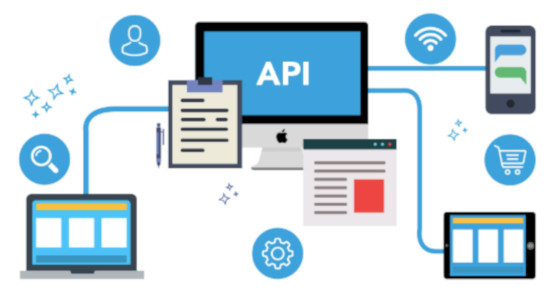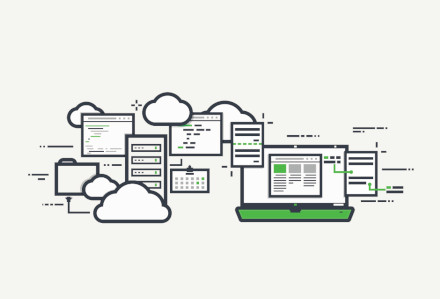Understanding APIs and its potential
For those in the technology space, Application Programming Interfaces - or APIs – is a well-known term. When hearing the phrase, many of those not in the industry dismiss it assuming that it does not apply to them. What many do not know is that most of us, especially in the Internet of Things-enabled world that we live in, benefit from APIs on a daily basis. This is especially true for those of us in the corporate real estate industry.
An API is a gateway
Simply put, an API provides a gateway for an enterprise to connect digitally with the world. For example, when you type www.senzolive.com into your browser this sends a request to the remote server that SenzoLive’s website sits on. This server’s API sends your browser the code for the SenzoLive website. Your browser interprets this and displays the website to you. The remote server is not in itself an API. Its API allows your browser to access and view the SenzoLive site.
There are various well-known APIs that we use, and benefit from, every day:
- The OAuth API allows you to log into sites using the access details from your social media accounts, such as Facebook. This saves the user time as they do not have to create a new username and profile for every site that they visit. In addition, it also saves them having to remember a variety of different passwords and usernames.
- APIs can also be packaged separately and distributed to customers for a particular purpose to be fulfilled. For example, Google provides customers with a number of APIs that customers can embed into their sites to allow them the functionality of this system on their own platform. Two well-known examples of these APIs are Google Maps and Google Translate.
Artificial intelligence and APIs
Alexa, the virtual assistant developed by Amazon, is being integrated with contact and motion sensors in the home to allow people to monitor and control their home environments without having to manually interact with the home appliance. For example:
- When a motion sensor picks up that someone is moving in a room, Alexa can be programmed to switch on the lights. After 30 minutes, if the sensor stops picking up movement Alexa can be programmed to switch off the lights.
- If contact sensors are installed on windows, Alexa can be asked to check that the windows are closed by monitoring the data fed to it by the contact sensors. After this, you can ask Alexa to arm your home security system.
- If a contact sensor is installed on the door to a particular room, Alexa can be programmed to turn on the light to that particular room when the sensor senses that the door has been closed.
The API as a gatekeeper
While acting as a gateway to a digital resource, such as a website, the API also monitors who accesses it. This is to prevent malicious individuals – such as hackers – from accessing the resource and infecting it with malware.
Should a resource be infected, the negative results can be widespread as happened to open-source CMS provider – Drupal – which, in 2014, suffered a breach of their system which put their entire, global portfolio of client sites at risk. With the stringent data privacy laws that are in place, had clients’ personal information been sold Drupal would have faced millions in damages. This means that it is vital for APIs to be encrypted.
API in the workplace
In one of my previous articles, I discussed how sensors are used in the workplace in order to provide facilities managers with information about the office environment so that they can manage the environment effectively.
A metering system gathers information from a building – through workplace sensors - and either stores it locally on an on-site server or transmits this data to the cloud. The system merely functions as an information-collection system and performs no further processing on this data. Should there already be first-generation, stand-alone building management system (BMS) in a building it is advised to implement a metering system.
A BMS is a tool at the disposal of a facilities manager to assist them with maintaining systems in the building such as the HVAC and lighting systems. The BMS relies on the facilities manager to perform such functions as switching the systems on and/or off as well as adjusting the levels of the system. It does not do this automatically.
It makes sense for a BMS and metering system to work together as the BMS will be able to use the information gathered by the metering system to manage the building more effectively. Increasing numbers of vendors are realising that the APIs of both systems need to be open in order to facilitate this interaction. The API allows the raw data collected by the BMS to be transformed into formats (such as applications and reporting systems) that end users require. Owners of corporate real estate and facility managers are seeing the benefits that integrated BMs’s are providing in terms of managing costs and minimising human error.
The Integrated BMS Market is set to grow at 16.7% between now and 2023. This is a very positive sign as the actionable insights generated by these smart systems will benefit companies immensely. APIs are integral in making this happen. However, to make sure that the integrity of these systems is preserved, it’s vital that these systems are encrypted.
It is vital to understand the potential of the APIs and the integrations coming from our systems in order to create tools and interfaces that will allow teams to maximise efficiencies and tailor reports to suit stakeholders requirements.
This being said, more and more vendors are siloing their R&D instead of building an end-to-end product. This translates into more complexity when choosing a digital workspace, teams and future proofing our enterprise architecture.
It is extremely necessary for companies to make all teams share information. This is to achieve the organisation’s real estate, employee experience and/or workplace transformation strategies. It is becoming more commonplace to see an integrated IT and real estate team as well as HR, IT and real estate teams. Although in its infancy stages, the above-mentioned issues of digital real estate teams needs to be developed further according to each company’s situation.
How Can We Help?
Contact Sales
– like to schedule a 15 min online DEMO? Have questions about benefits of occupancy management and analytics? Need more information about different sensor types? Pricing? Our sales team is here to help.
Tech Support
– If you are an existing SenzoLive customer, our tech support team is here to answer your questions.
Technical, API Docs
– If you considering integrating Senzolive occupancy data to your own dashboards and analytics, our product team has prepared documentation to help you learn the details.
Careers
– we need new brilliant minds to join our team ASAP. Together, let’s propel the smart-device revolution in real estate markets. Give us a call – WE ARE HIRING.












